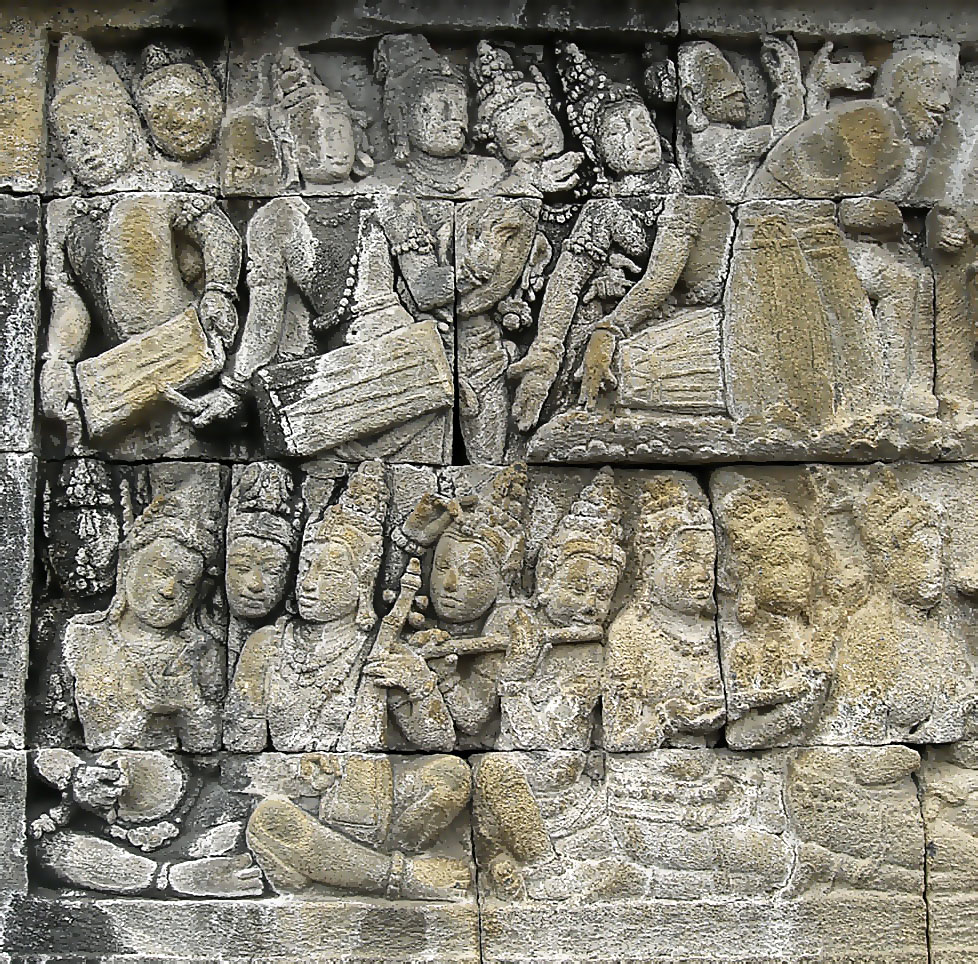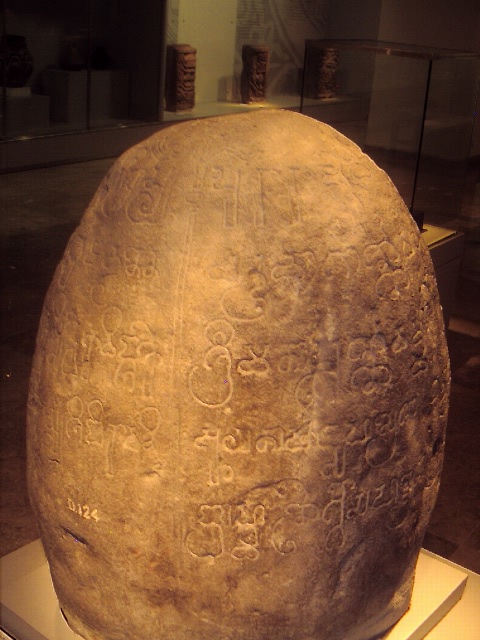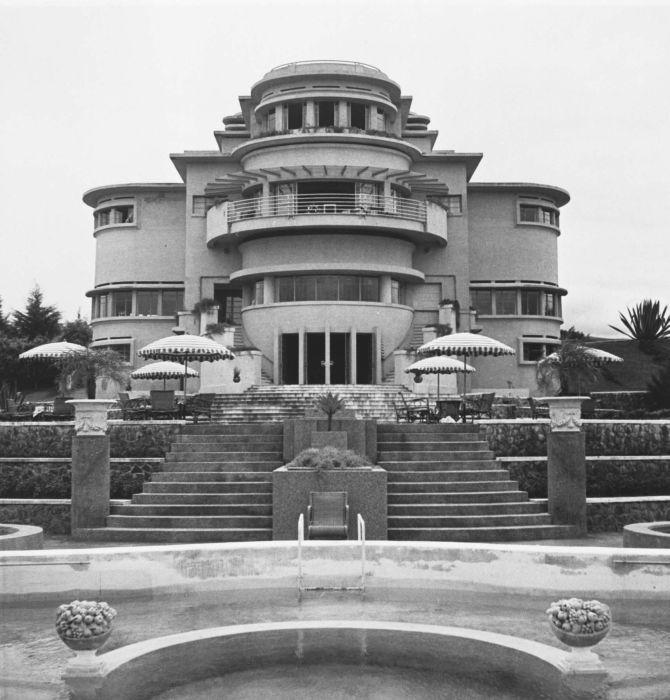|
Degung
''Gamelan degung'' is a form of Sundanese musical ensemble that uses a subset of modified gamelan instruments with a particular mode of '' degung'' scale. The instruments are manufactured under local conditions in towns in West Java such as Bogor and Bandung. ''Degung'' music is often played at public gatherings in West Java, such as at local elections, as well as many other events. There is international interest in ''degung'' as well among communities in other countries interested in Indonesian and gamelan music.Dewi Anggraeni"Melbourne: Gamelan, elephants and 'Jackpot'" , ''The Jakarta Post'', 22 February 2004. Gamelan degung also playable in '' madenda'' scale, which is included in the set as a complementary tone, usually marked as a -3/''ni'' tone in the set. Playing gamelan degung in this scale requires the substitution of the 3/''na'' metal bars into -3/''ni'' tones on all instruments. Instruments The instrumentation of ''gamelan degung'' is quite flexible. It may i ... [...More Info...] [...Related Items...] OR: [Wikipedia] [Google] [Baidu] |
Suling
The suling ( Sundanese: ) is a musical instrument of the Sundanese people in Indonesia. It is used in the Degung ensemble. Bamboo ring flute can also be found in Southeast Asia, especially in Brunei, Indonesia, Malaysia, the Philippines and Singapore. Construction Sulings are made mainly of ''tamiang'' bamboo (''Schizostachyum blumei'', Nees), a long, thin-walled bamboo tube. The mouthpiece of the suling is circled with a thin band made of rattan near a small hole. Playing method To play the suling, performers blow into a gap between the rattan band and the bamboo tube at one end of the instrument. There are two factors that affect a fine suling's tone: #Fingering position. #Speed of the airflow blown by the mouth. This factor also should be supported with the position of the mouth around the blowing hole. The fingering position changes the wavelength of sound resonance inside the suling's body. Depending on the distance of nearest hole to the suling's head, different notes c ... [...More Info...] [...Related Items...] OR: [Wikipedia] [Google] [Baidu] |
Gamelan
Gamelan (; ; , ; ) is the traditional musical ensemble, ensemble music of the Javanese people, Javanese, Sundanese people, Sundanese, and Balinese people, Balinese peoples of Indonesia, made up predominantly of percussion instrument, percussive instruments. The most common instruments used are metallophones (played with mallets) and a set of hand-drums called ''kendang'', which keep the beat (music), beat. The ''kemanak'', a banana-shaped idiophone, and the ''gangsa'', another metallophone, are also commonly used gamelan Musical instrument, instruments on Bali. Other notable instruments include xylophones, bamboo flutes (similar to the Indian ''bansuri''), a bowed string instrument called a ''rebab'' (somewhat similar to the ''gadulka'' of Bulgaria), and a zither-like instrument called a ''siter'', used in Javanese gamelan. Additionally, vocalists may be featured, being referred to as ''sindhen'' for females or ''gerong'' for males.Sumarsam (1998)''Introduction to Javanese ... [...More Info...] [...Related Items...] OR: [Wikipedia] [Google] [Baidu] |
Pelog
Pelog (, , ) is one of the essential tuning systems used in gamelan instruments that has a heptatonic scale. The other, older, scale commonly used is called ''slendro''. ''Pelog'' has seven notes, but many gamelan ensembles only have keys for five of the pitches. Even in ensembles that have all seven notes, many pieces only use a subset of five notes, sometimes the additional 4th tone is also used in a piece like western accidentals. Etymology Pelog is a Javanese term for one of the scales in gamelan. In Javanese, the term is said to be a variant of the word ''pelag'' meaning "fine" or "beautiful". Tuning Since the tuning varies so widely from island to island, village to village, and even among ''gamelan'', it is difficult to characterize in terms of intervals. One rough approximation expresses the seven pitches of Central Javanese ''pelog'' as a subset of 9-tone equal temperament. An analysis of 27 Central Javanese gamelans by Surjodiningrat (1972) revealed a statistical p ... [...More Info...] [...Related Items...] OR: [Wikipedia] [Google] [Baidu] |
Bonang
The bonang is an Music of Indonesia, Indonesian musical instrument used in the Javanese people, Javanese gamelan. It is a collection of small gongs (sometimes called "kettles" or "pots") placed horizontally onto strings in a wooden frame (''rancak''), either one or two rows wide. All of the kettles have a central boss, but around it the lower-pitched ones have a flattened head, while the higher ones have an arched one. Each is tuned to a specific pitch in the appropriate scale; thus there are different bonang for pelog and slendro. They are typically hit with padded sticks (''tabuh''). This is similar to the other cradled gongs in the gamelan, the kethuk, kempyang, and kenong. Bonang may be made of forged bronze, welded and cold-hammered iron, or a combination of metals. In addition to the gong-shaped form of kettles, economical bonang made of hammered iron or brass plates with raised bosses are often found in village gamelan, in Suriname-style gamelan, and in some American gam ... [...More Info...] [...Related Items...] OR: [Wikipedia] [Google] [Baidu] |
West Java
West Java (, ) is an Indonesian Provinces of Indonesia, province on the western part of the island of Java, with its provincial capital in Bandung. West Java is bordered by the province of Banten and the country's capital region of Jakarta to the west, the Java Sea to the north, the province of Central Java to the east and the Indian Ocean to the south. With Banten, this province is the native homeland of the Sundanese people, the Ethnic groups in Indonesia, second-largest ethnic group in Indonesia. West Java was one of the first eight provinces of Indonesia formed following the Proclamation of Indonesian Independence, country's independence proclamation and was later legally re-established on 14 July 1950. In 1966, the city of Jakarta was split off from West Java as a 'special capital region' (), with a status equivalent to that of a province, while in 2000 the western parts of the province were in turn split away to form a separate Banten province. Even following these split- ... [...More Info...] [...Related Items...] OR: [Wikipedia] [Google] [Baidu] |
Kendang
A ''kendang'' or ''gendang'' (, , , Tausug language, Tausug/Bajau/Maranao language, Maranao: ''gandang'', Buginese language, Bugis: ''gendrang'' and Makassarese language, Makassar: ''gandrang'' or ''ganrang'') is a two-headed drum used by people from the Indonesian Archipelago. The kendang is one of the primary instruments used in the gamelan ensembles of Javanese music, Javanese, Music of Sunda, Sundanese, and Balinese music, Balinese music. It is also used in various Kulintang ensembles in Indonesia, Brunei, Malaysia, Singapore, and the Philippines. It is constructed in a variety of ways by different ethnic groups. It is related to the Indian double-headed mridangam drum. Overview The typical double-sided membrane drums are known throughout Maritime Southeast Asia and India. One of the oldest image of kendang can be found in Candi of Indonesia, ancient temples in Indonesia, especially the ninth century Borobudur and Prambanan temple. Among the Javanese people, Javanese, Sund ... [...More Info...] [...Related Items...] OR: [Wikipedia] [Google] [Baidu] |
Gamelan Salendro
The gamelan salendro is a form of gamelan music found in West Java, Indonesia. It is played as an accompaniment to wayang golek (rod puppet) performances and dances. It uses a similar ensemble as a small central Javanese gamelan, but has developed differently, and shows the more exuberant character.Broughton, Simon, et al., eds. ''World Music: The Rough Guide''. London: The Rough Guides, 1994. Pages 420-421. See also * Gamelan * Degung * Angklung The ( Sundanese: ) is a musical instrument from the Sundanese in Indonesia that is made of a varying number of bamboo tubes attached to a bamboo frame. The tubes are carved to produce a resonant pitch when struck and are tuned to octaves, sim ... References Gamelan ensembles and genres Sundanese music {{music-genre-stub ... [...More Info...] [...Related Items...] OR: [Wikipedia] [Google] [Baidu] |
Bogor
Bogor City (), or Bogor (, ), is a landlocked city in the West Java, Indonesia. Located around south of the national capital of Jakarta, Bogor is the 6th largest city in the Jakarta metropolitan area and the 14th overall nationwide. Estimasi Penduduk Menurut Umur Tunggal Dan Jenis Kelamin 2014 Kementerian Kesehatan The city covers an area of 111.39 km2, and it had a population of 950,334 at the 2010 CensusBiro Pusat Statistik, Jakarta, 2011. and 1,043,070 at the 2020 Census.Badan Pusat Statistik, Jakarta, 2021. The official population estimate as at the end of 2023 was 1,127,408. Bogor is an important center of economy, science, cultural heritage and tourism in Indonesia because this city is a mount ... [...More Info...] [...Related Items...] OR: [Wikipedia] [Google] [Baidu] |
Bandung
Bandung is the capital city of the West Java province of Indonesia. Located on the island of Java, the city is the List of Indonesian cities by population, fourth-most populous city and fourth largest city in Indonesia after Jakarta, Surabaya, and Medan. Greater Bandung (Bandung Basin Metropolitan Area / BBMA) is the country's second-largest and second most populous List of metropolitan areas in Indonesia, metropolitan area, with over 11 million inhabitants. Situated above sea level (the highest point in the North area is at an altitude of , and the lowest in the South at above sea level), approximately southeast of Jakarta, Bandung has cooler year-round temperatures than most other List of cities in Indonesia, Indonesian cities. The city lies in a river basin surrounded by volcanic mountains that provide a natural defense system, which was the primary reason for the Dutch East Indies government's plan to move the capital from Batavia (modern-day Jakarta) to Bandung. The D ... [...More Info...] [...Related Items...] OR: [Wikipedia] [Google] [Baidu] |
Sundanese People
The Sundanese (; ) are an Austronesian people, Austronesian ethnic group native to Java in Indonesia, primarily West Java. They number approximately 42 million and form Ethnic groups in Indonesia, Indonesia's second most populous ethnic group. They speak the Sundanese language, which is part of the Austronesian languages. The western area of the island of Java, namely the provinces of West Java, Banten, and Jakarta, as well as the westernmost part of Central Java, is called by the Sundanese people ''Tatar Sunda'' or ''Pasundan'' (meaning Sundanese land). Sundanese migrants can also be found in Lampung, South Sumatra, and, to a lesser extent, in Central Java and East Java. The Sundanese people can also be found on several other islands in Indonesia such as Sumatra, Kalimantan, Sulawesi, Bali and Papua (province), Papua. Origins Migration theories The Sundanese are of Austronesian peoples, Austronesian origins and are thought to have originated in Taiwan. They migrated through th ... [...More Info...] [...Related Items...] OR: [Wikipedia] [Google] [Baidu] |





